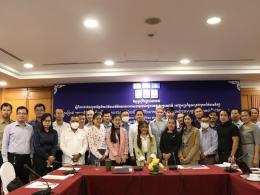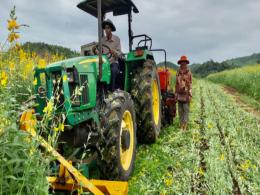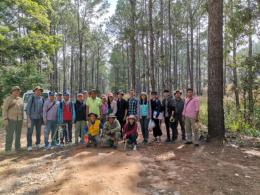Strengthening Climate Information and Early Warning System in Cambodia to Support Climate Change Resilient Development and Adapation to Climate Change
Background
Changes to global climate conditions are exacerbating the effects of temperature driven hydro meteorological hazards, increasing the frequency and intensity of extreme weather events. For developing regions, the impacts can be catastrophic, as their inhabitants often lack the ability to cope with or adapt to these destructive forces, resulting in a greater risk of natural disaster.
Flooding is one of the most damaging natural hazards worldwide, as heavier precipitation patterns coupled with increased global urbanisation, are leading to the growing occurrence of both pluvial and fluvial flood events. It is therefore important that governments are supported in the implementation of climate change mitigation and adaptation measures, to protect their vulnerable communities. These groups are often comprised of the poorest and most disadvantaged members of society, highly susceptible to flood impacts due to a lack of preparatory action and limited coping capacities.
Overall Objective
Address the flood mitigation challenge and reduce the vulnerability of urban populations to climate change impacts
Specific Objectives
1. Producing evidence based recommendations for the Royal Government of Cambodia on flood prevention and mitigation in Battambang city; and
2. Reducing the vulnerability of urban populations to climate change impacts, by facilitating access to an innovative and effective urban Early Warning System (EWS).
Approach
People In Need Cambodia will use an innovative approach to elevation data collection (using tuk-tuks and drones), to facilitate the use of urban flood modelling for the City of Battambang, as well as exploring additional last-mile communication channels for the implementation of a new urban EWS, building on previous PIN experience and partnership with NCDM on EWS mostly targeting farmers / rural households. Local authorities will be engaged through the Provincial and District Committee for Disaster Management, which brings together the provincial and municipal administration, and relevant departments with a role in disaster management. The system will be handed over to these structures, based on previous cooperation between NCDM and PIN. The project will also provide policy recommendations and inputs to local authorities for the incorporation of flood management measures in local plans and budgets, based on evidence generated both by flood modelling and by social research / vulnerability assessment in vulnerable communities.
Outputs and Key Activities
| Result | Key Activities |
|---|---|
|
|
Knowledge Products
• GIS mapping • Urban Early Warning System (EWS) • Workshops and training materials
| Timeframe | Total Budget | Partners | Location |
|---|---|---|---|
|
(18 months) |
USD 110,000 (From CCCA US$100,000) |
PIN National Committee for Disaster Management (NCDM) |
Battambang city |






